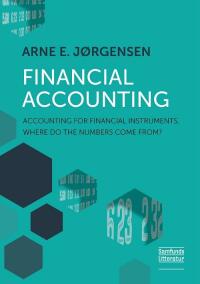Answered step by step
Verified Expert Solution
Question
1 Approved Answer
Mity-Lite (ML) is a manufacturer of folding and stackable chairs and folding tables for social events. The demand for MLs products is seasonal, peaking in
- Mity-Lite (ML) is a manufacturer of folding and stackable chairs and folding tables for social events. The demand for ML’s products is seasonal, peaking in spring and summer. Suppose it is December now, and the production manager needs to prepare the production plan for the next 12 months (for simplicity we use four quarters). Also for simplicity, we aggregate all products. The forecast during each of the next 4 quarters is: Q1 Q2 Q3 Q4 141,330 242,550 217,866 129,900 ML currently employs 348 “permanent” workers. The workers are paid $10 per hour and work 480 hours a quarter. The workers can make approximately 167,040 units per quarter during regular time (10 hours a day, 4 days a week). ( Note: This works out to 1 hour per unit per worker). They can also work up to 25 percent more as overtime (i.e., work 10 hours more on Fridays) and will be paid 1.5 times the regular wage rate. ML can hire up to 200 temporary workers for a second shift. The average hiring cost (searching, interviewing, and training) is estimated to be $480 per new employee. Note: Hiring cost is charged to each unit produced during the first quarter of employment. Temps are kept for one or two quarters. For simplicity, we assume that the productivity of a new temp worker is the same as a permanent worker. Also, a temp workers’ wage rate is $10 per hour. The inventory holding cost rate per quarter is 3% of unit cost, and the unit cost is $90. There are no products on hand now, and the desired seasonal inventory at the end of the year is zero. (In reality, ML keeps the equivalent of two weeks of demand as safety stock; we can assume that these are kept separately). ML wishes to meet all demand, but shortage during any quarter (except last) is allowed, in which case assume that the shortage is backordered at the cost of $15 per unit per quarter. a-1. Calculate all the relevant unit costs. Suppose ML uses permanent workers during regular time and nothing else. In the last quarter, ML will produce only what is needed and then will let workers go on vacation (i.e., they plan to produce 129,900 units). (Do not leave any empty spaces; input a "0" wherever required. Round the final answers to the nearest whole number.) Quarter 1 2 3 4 Total Forecast 141,330 242,550 217,866 129,900 731,646 Output Regular Temp Overtime Inventory Beginning Ending Average Cumulative backorder a-2. Determine the number of units short during each quarter. (Do not round intermediate calculations. Round the final answers to the nearest whole number.) Shortage Units Q2 Q3 b. Suppose ML hires temp workers to meet the shortages of part a. Determine when and how many temp workers should be used. Hint: Hire 104 temps for two quarters starting in Q2, and 2 temps for one quarter in quarter 3. (Do not leave any empty spaces; input a "0" wherever required. Round the final answers to the nearest whole number.) Quarter 1 2 3 4 Total Forecast 141,330 242,550 217,866 129,900 731,646 Output Regular Temp = 200(480) Overtime Inventory Beginning Ending Average Cumulative backorder Costs: Regular @ 10 Temp @ 10 Overtime @ 15 Hire/unit @ $1.0 Inventory @ $2.7 Backorders @ $15 Total $
Step by Step Solution
There are 3 Steps involved in it
Step: 1

Get Instant Access to Expert-Tailored Solutions
See step-by-step solutions with expert insights and AI powered tools for academic success
Step: 2

Step: 3

Ace Your Homework with AI
Get the answers you need in no time with our AI-driven, step-by-step assistance
Get Started


